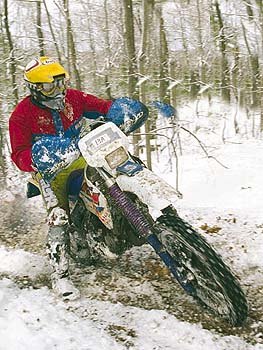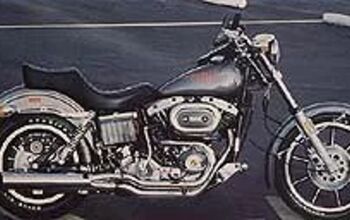ATK 1997 - Motorcycle.com
Just last month the Trail Rider staff spent a few days with the people from ATK, a sort of informal press introduction to get reacquainted with the '97 ATK model line.
Having spent considerable time this past season aboard a 260 two-stroke (which we literally boxed up for shipment the day before our departure to Utah), we were well primed to see where the company was headed. You'll recall that last year, after ample fiddling, we found the 260 LQ to be a pleasant trail bike and competitive racer, but not without warts. Many of those issues identified here in Trail Rider have been smoothed out (perhaps surprisingly so) in the '97 model line. Additionally, we got some fresh first hand experience aboard the trick ATK four-strokes, 350 and 605 cross country (off-road) and dual sport models and finally, a peek into what lies just around the corner for the USA's only dirt bike manufacturer. Here's what to look for from ATK in 1997.
Both the 250 and 260 LQ models are back for '97, graced with some refinements. For the record, the 250 LQ is a true 250cc motor, while the 260 is actually a 251cc hybrid, its bore "hogged out" a mere 0.15mm. Both bikes are still feather weights in enduro trim, with a claimed (and pretty darn close to what we measured last year) 235 pounds dry. The enduro kit (skid plate, spark arrestor, lighting kit) are options on the 250 while standard on the 260 model. Using the laudable "if it ain't broke, don't fix it" mentality, the '97 two strokes return with plenty of the same world class hardware we've come to expect from ATK. This includes stout Pro-Taper handlebars, trick-looking gold anodized Talon hubs, and self-cleaning Answer Radialite rear and front steel sprockets, driven by a DID O-ring chain.
Finally, a 3.1 gallon fuel cell with integral bullet-proof radiator shrouds ensures you'll never worry about brush tearing off radiator plastic, or fuel problems completing those 50 mile enduro loops. In the new and improved category, '97 ATKs come with a beefy new chain guide that'll surely stand up to the worst use and considerable abuse. A new subframe bracing scheme better supports the enduro fender, tail light and license plate mounting assembly, keeping that hungry rear knobby from chewing up plastic.
Thumpers
Regarding power output, our seat-of-the pants impression puts the 350 somewhere in the middle of the midsize thumper class. Not the same raw, revving, explosive power of the Husaberg 400, however, easily stronger than current stock KLX300, XT350 and DR350 motors. The 605 is a bit tougher to place. The counter-balanced motor is easily smoother than the output of, say, the Honda XR650L, but it's otherwise hard to distinguish it from other open class thumpers, like the XR600, KTM 620 or Husky 610, without a side by side comparison. This is probably good, as each of those other bikes have distinguished themselves on many occasions as proven trail bikes and racers.
More by Trail Rider Magazine- Mark Uth

































Comments
Join the conversation